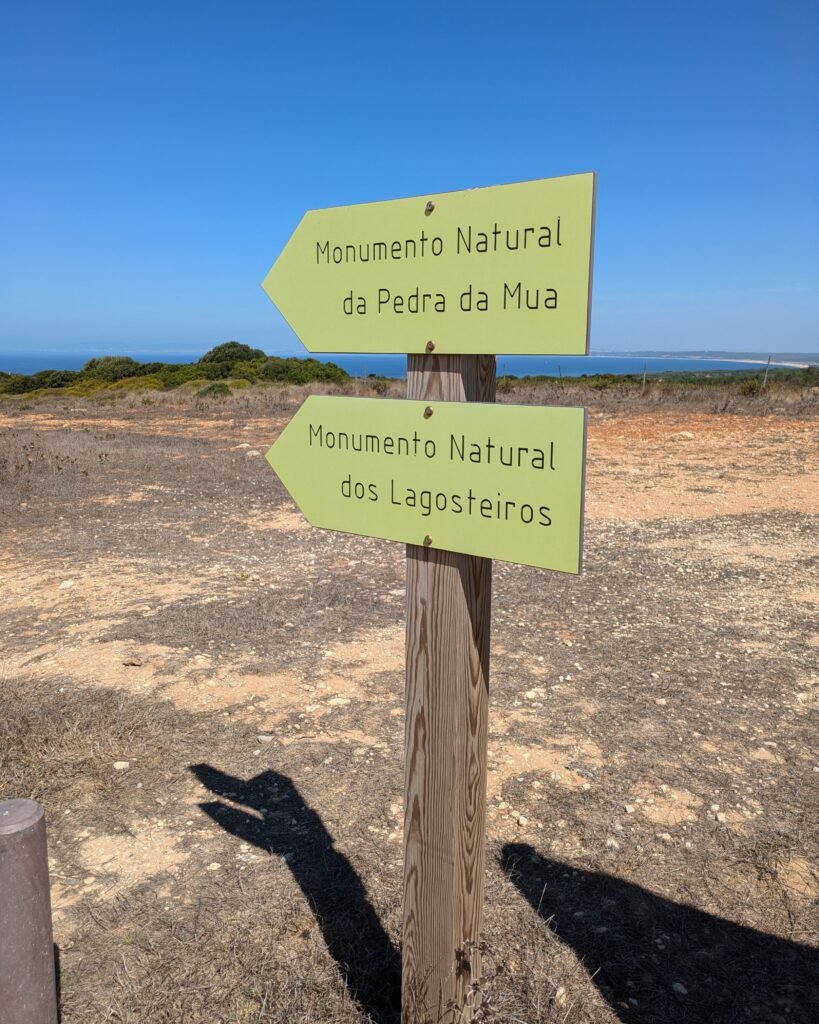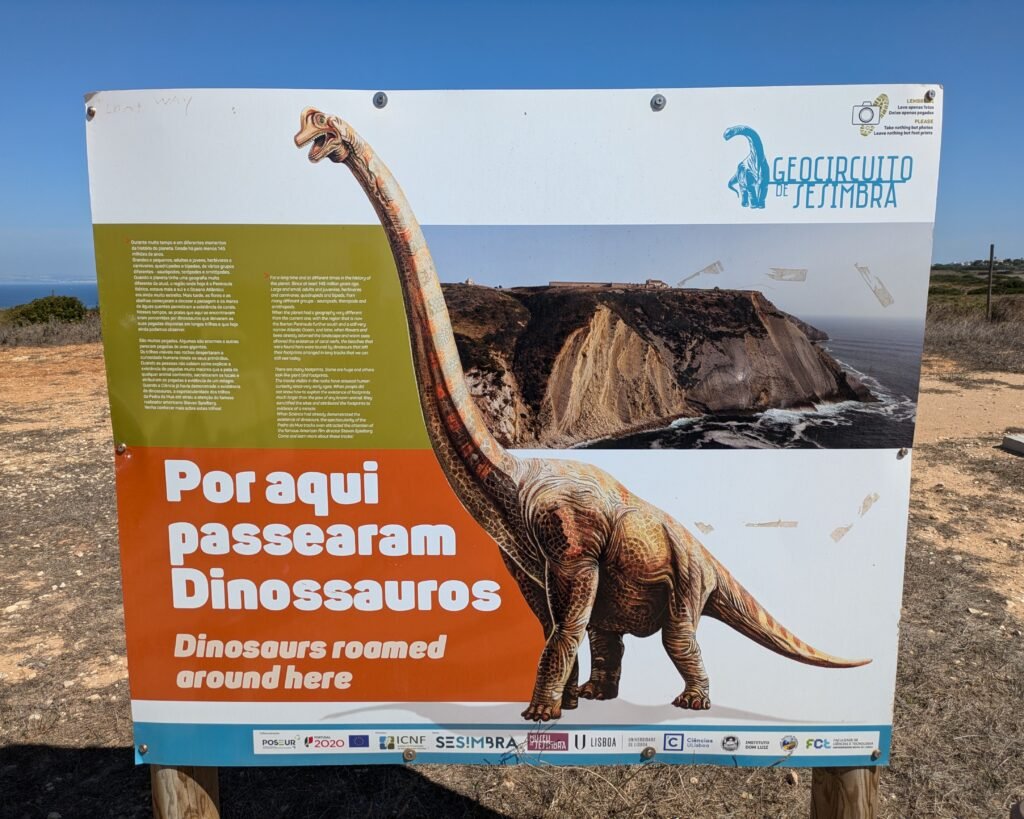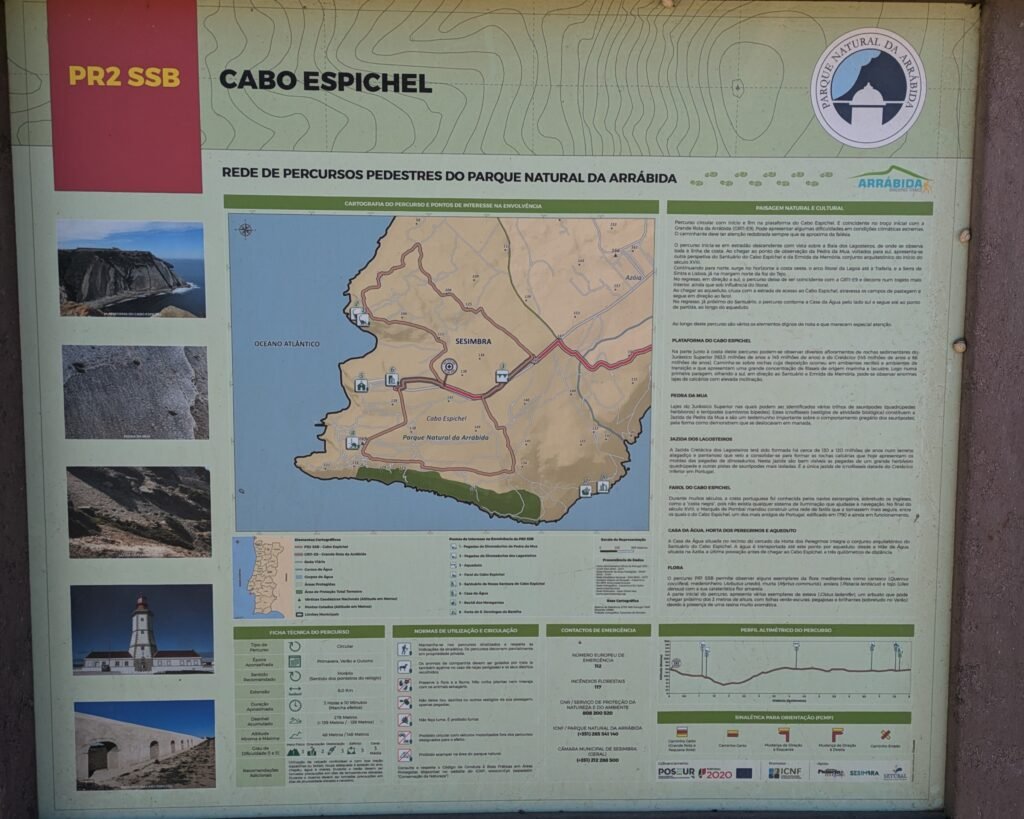Updated September 2024
Stand on the headland facing the Atlantic Ocean. To your left, just across the bay sheltering Lagosteiros Beach, lies Cabo Espichel which is the furthest point of the Setúbal peninsula. In front, the ocean stretches out to the Americas. To your right, you can make out Lisbon and the Sintra hills across the Tejo River.
Look down. The sheet of rocks at your feet is pitted with large round depressions. Around 130 million years ago, during the Cretaceous period, an herbivorous bipedal dinosaur, possibly an Iguanodon, walked through mud. Those are her footprints.



Specifically, these are ichnofossils, or trace fossils. They are not fossilized animals’ bodies, but the fossilized evidence that an animal was there – the tracks of their movement.
Around the site, there are other tracks. Readily visible are three-toed footprints that belong to bipedal, carnivorous theropods. The spacing of the tracks show that the dinosaur was traveling very quickly, approximately 14km per hour!


This whole area is filled with fossilized footprints and sites of geological and paleontological significance. Across the bay, looking towards Cabo Espichel, lie the amazing Pedra da Mua footprints on the cliff face above the bay. Those tracks are much older, dating back to around 145 million years ago.
Location
The Natural Monument is on Cape (Cabo) Espichel, in the Setúbal district.
Access
The site is very easy to reach. The road out to Cabo Espichel is well signposted, and there is a signposted car park just before reaching the convent (Santuário da Nossa Senhora do Cabo Espichel). There is a wide and easily navigable dirt road that goes to the monument. The walk is about 1.3km to the monument, on solid dirt road. The gradient is not very steep.

Signage
On the road, there is a sign to the Pedra da Mua natural monument of dinosaur footprints (“pegadas”). In the car park there are trail signs, pointing out both Pedra da Mua and Lagosteiros. There are also notice boards with a map of the hiking trail (in Portuguese) and more information about the fossils (in English and Portuguese).




After you follow the trail for about 1.3 km, you will see a wooden railing along the cliff edge with a signboard for the Pedra da Mua Natural Monument across the bay. Keep going towards the point (the trail is less distinct at this point) and look for another wooden railing with a trail sign indicating Monument Natural – Pegadas de Dinossauros.





Links
- Article (in English) from Wikipedia
- Information from Natural.pt (in English) by ICNF (Institute for the Conservation of Nature and Forests)
- A description (in English) from an online travel guide to the Sesimbra region
- Information from the City Council of Sesimbra (in Portuguese)
- Information from geoPortal (in Portuguese)
- A video (without speaking) from Portugal em Pedra
- A post (in Portuguese) from Portugal em Pedra
Nearby
The Pedra da Mua monument is visible from Lagosteiros across the bay. (Those are older by about 15 million years!) There are many fossils that have been found in the area, and quite possibly there are many more footprint sites that can be reached. There is also the natural monument of dinosaur footprints at Pedreiro do Avelino, which is about 11km on the road from the cape to Sesimbra.

Pingback:Pedra da Mua Natural Monument - Prehistoric Portugal